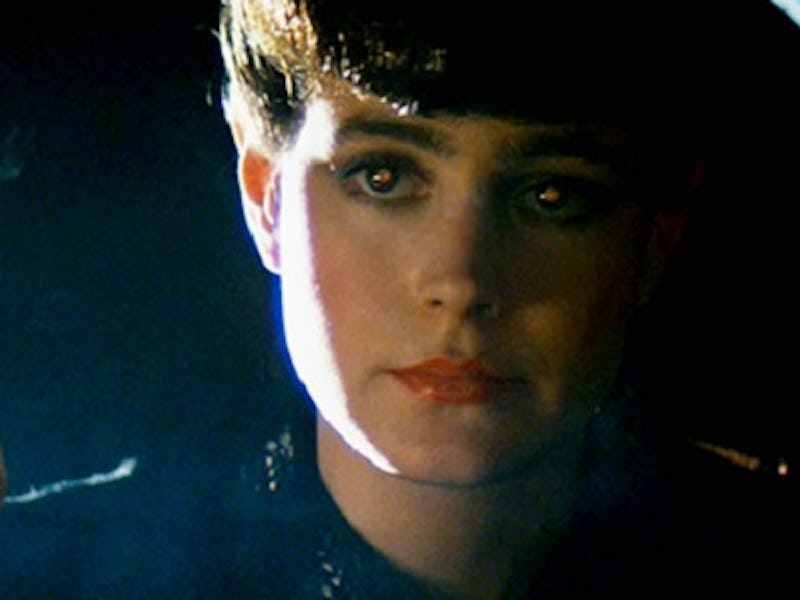Why Sexy Robots in Sci-Fi Will Never Die, Literally And Figuratively
Lookin at you, "Blade Runner."

Science fiction is great at abstractly explaining the human experience, which includes a lot of thinking about (and having) sex. Movies like “Blade Runner” — the sequel to which hits theaters today — frequently cast human ideals about sexuality onto fictionalized cyborgs. Now, a professor in sci-fi media tells Inverse that the trope of the “sexy robot” isn’t really about robots at all, but rather, human fear — and longing.
According to Lisa Yaszek, Professor and Associate Chair in the School of Literature, Media, and Communication at Georgia Tech, the sexy robot can be traced all the way back to the evil robot Maria from “Metropolis” (1929), though since then, it’s taken on many different forms. Before we dive it, it’d probably help to define what typically qualifies as a sexy robot.
“The sexy robot is obviously going to be conventionally sexy, but it can also be cute,” Yaszek tells Inverse. “It can be an aggressive sexuality like we see with Zhora in ‘Blade Runner,’ or it can a cute sexuality in anime or manga. But even someone like Pris in ‘Blade Runner’ plays cute as much as she plays sexy.”
The sexy robot is usually skilled with both domestic work and of course, kicking ass. Basically, part of the lure of the sexy robot is that they could screw you or kill you, depending on their mood. Some people think danger—coupled with complete stoicism—is sexy, I guess.
“This is someone who might do your house cleaning, sexual labor, and then back you up in a bar fight,” Yaszek explains.
Throughout cinematic history, sexy robots have taken many different forms, both before and after “Blade Runner.”
“Some of my favorites are from the original ‘Star Trek’ series, specifically an episode called ‘I, Mudd,’ which features a robot harem,” Yaszek tells Inverse. “But of course Pris and Zhora from ‘Blade Runner’ are perhaps the most classic of the sexy robots and the most memorable.”
While the “sexy robot” has cropped up quite a few times over the second half of 20th century sci-fi and extended well into the 21st century, over the last few years, Yaszek says there’s been a “renewed interest” in this character role. Eva from “Ex Machina,” Sam from “Her” and Maeve and Clementine from “Westworld” all fall into this category, though some — specifically Maeve and Clementine — reject their hypersexualized status, unlike some of their progenitors.
While sci-fi — and “sexy robots” within it — evolve, there are some key reasons why the genre continually returns to the trope.
“Robots are a blank slate on which we project our hopes and fears about what it means to be human, especially in a world that seems increasingly technological to us,” Yaszek says. “Of course, one of the basic ways we understand ourselves as humans is through sex and gender. But of course, our ideas about sex and gender change over time, and so it’s no surprise to me that we keep returning to the sexy robot as a way to sort out those changes.”
Sci-fi uses robots to help to navigate our complexities. While robots are certainly complicated in their own way, humanity needs something without a ton of existential baggage to understand ourselves. Thanks for the help, sexy robots!